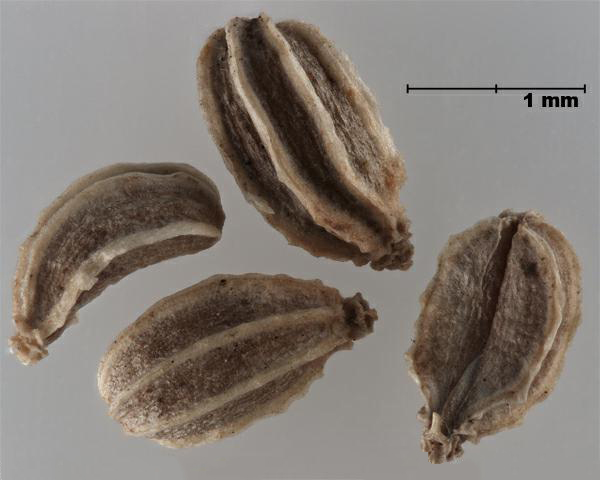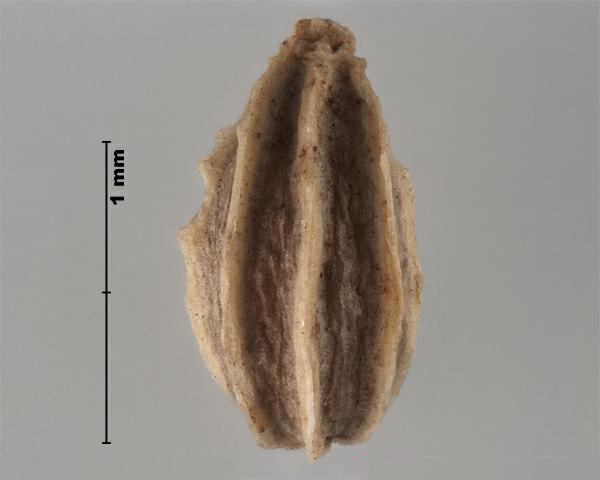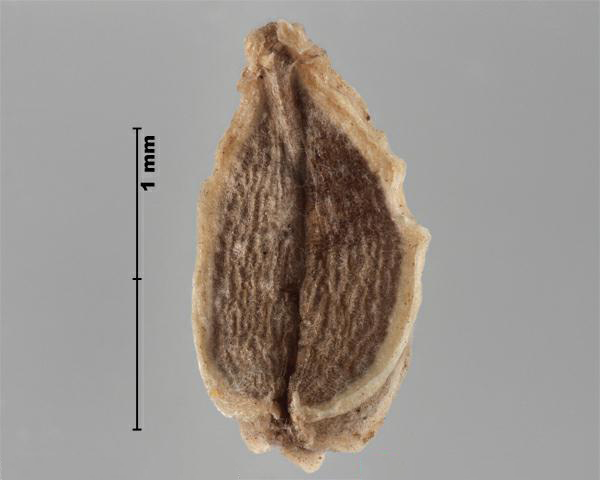Family
Apiaceae
Common Name
Wild carrot
Regulation
Secondary Noxious, Class 3 in the Canadian Weed Seeds Order, 2016 under the Seeds Act.
Distribution
Canadian: Occurs in BC, MB, NB, NL, NS, ON, PE, QC, SK (Brouillet et al. 2016Footnote 1).
Worldwide: Native to Europe, northern Africa and southwestern Asia (CABI 2016Footnote 2, USDA-ARS 2016Footnote 3). Widely introduced elsewhere in temperate regions including China, Japan, Australasia and North America (CABI 2016Footnote 2, USDA-ARS 2016Footnote 3).
Duration of life cycle
Biennial
Seed or fruit type
Schizocarp, divided into 2 mericarps
Identification features
Size
- Mericarp length: 2.0 - 4.0 mm
- Mericarp width: 1.3 - 2.3 mm
- Mericarp thickness: 1.0 mm
Shape
- Oval to teardrop-shaped mericarp, flat on one side, compressed
Surface Texture
- Mericarp dull, with 5 ribs on outer side and 2 small arched ribs on inner side
Colour
- Mericarp dull grey-brown with straw yellow ribs and bristles
Other Features
- Ribs on mericarp are straight; the oil ducts between have a smooth surface
- Ribs on mericarp are usually winged with prominent hairs that may be removed during processing
- Each rib is lined with small bristles that are visible even if the seed is worn
- One end of the mericarp has a pointed remnant floral style
Habitat and Crop Association
Waste places, roadsides and disturbed areas, old fields, meadows and underused or depleted pastures (Dale 1974Footnote 4, Darbyshire 2003Footnote 5). Not typically considered a weed of cultivated fields on prime agricultural land but increasingly found in no-till production systems (Dale 1974Footnote 4, Cowbrough 2004Footnote 6). Reported in corn, soybeans and winter wheat in Ontario (Cowbrough 2004Footnote 6).
General Information
Wild carrot spread to North America through garden plantings and escaped to become a weed of roadsides and waste places (Darbyshire 2003Footnote 5, DiTomaso and Healy 2007Footnote 7). It may also have been introduced as a seed contaminant (CABI 2016Footnote 2).
Wild carrot hybridizes readily with cultivated carrot (DiTomaso and Healy 2007Footnote 7) and was first reported in Ontario and Quebec in 1883 (Royer and Dickinson 1999Footnote 8). Seeds are spread by wind, or by attachment to animals and clothing; they may also be spread in contaminated seed or grain (Dale 1974Footnote 4, CABI 2016Footnote 2). Individual plants produce 1,000-40,000 seeds and seeds remain viable in the soil for several years (Dale 1974Footnote 4).
Similar species
Poison hemlock (Conium maculatum)
- Poison hemlock has similar mericarp size, teardrop shape, dull brown-coloured fruits and distinct ribs as wild carrot.
- Poison hemlock (thickness: 1.3 - 2.0 mm) is generally thicker and lacks the rib-associated hairs of wild carrot.
- The mericarp surface of poison hemlock is wrinkled between wavy ribs, and wild carrot is smooth between straight ribs.
Photos
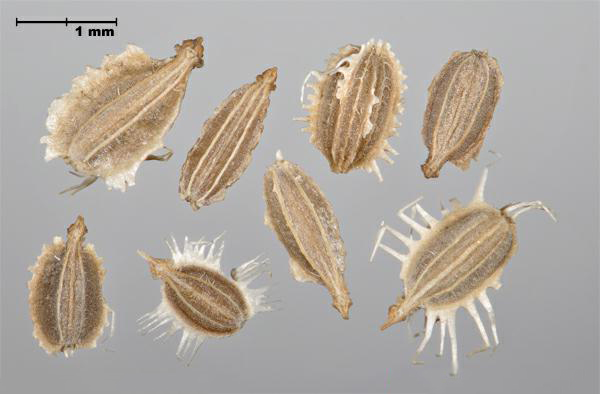

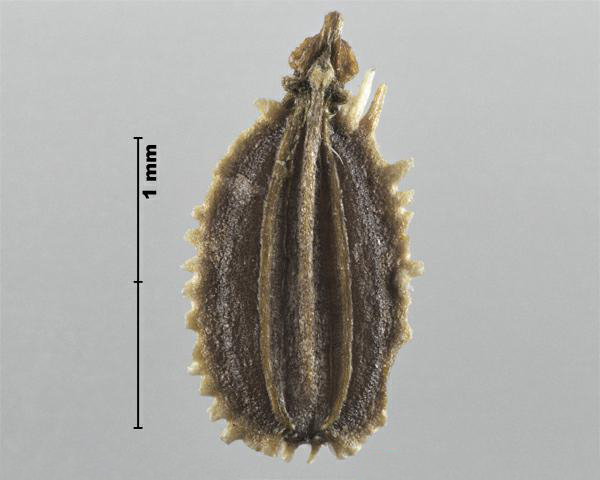




Similar species
